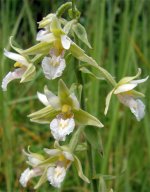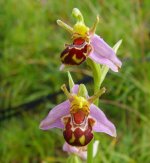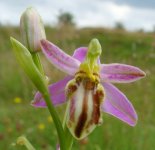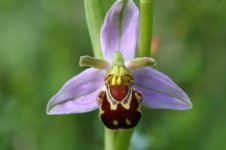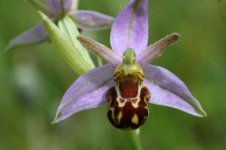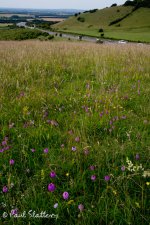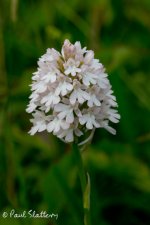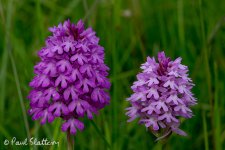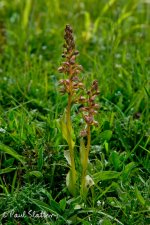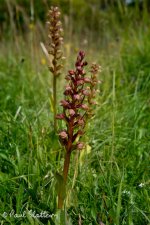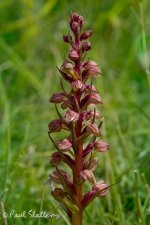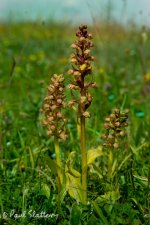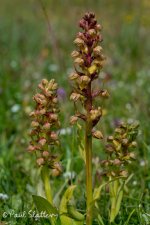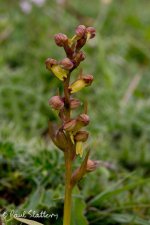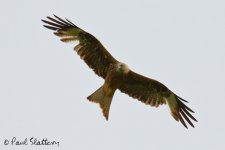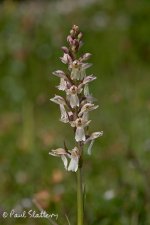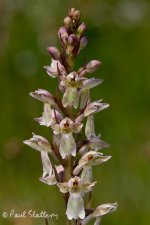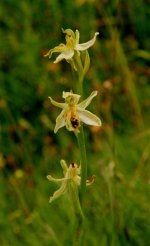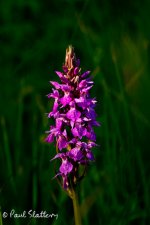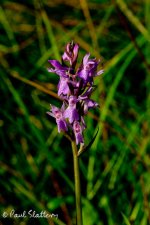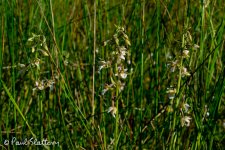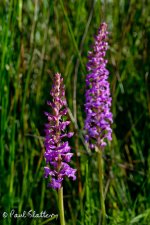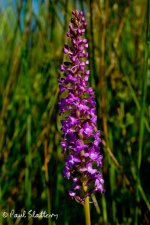On the general point of varietal names, I personally think that many of them are worthless. Orchids, perhaps more than any other family of plants in Britain, have attracted the same micro-scrutiny that the Victorians gave butterflies, whereby they named every little mutation and the butterfly collectors then set out to add them to their cabinets. Some orchid varieties are very distinct and worthy of a name (e.g. some of the Bee Orchid vars), and some are of biological interest, or have a big impact of identification (e.g. the various varieties of Green-flowered Helleborine, which may shed light on self-pollination vs cross-pollination). But, if you look hard enough you can find every stage of gradation between an extremely well-marked and richly coloured Heath Spotted Orchid and one with an all-white flower (and see Sean's earlier post on Frog Orchids). I wish now that I had not mentioned var. leucantha!




